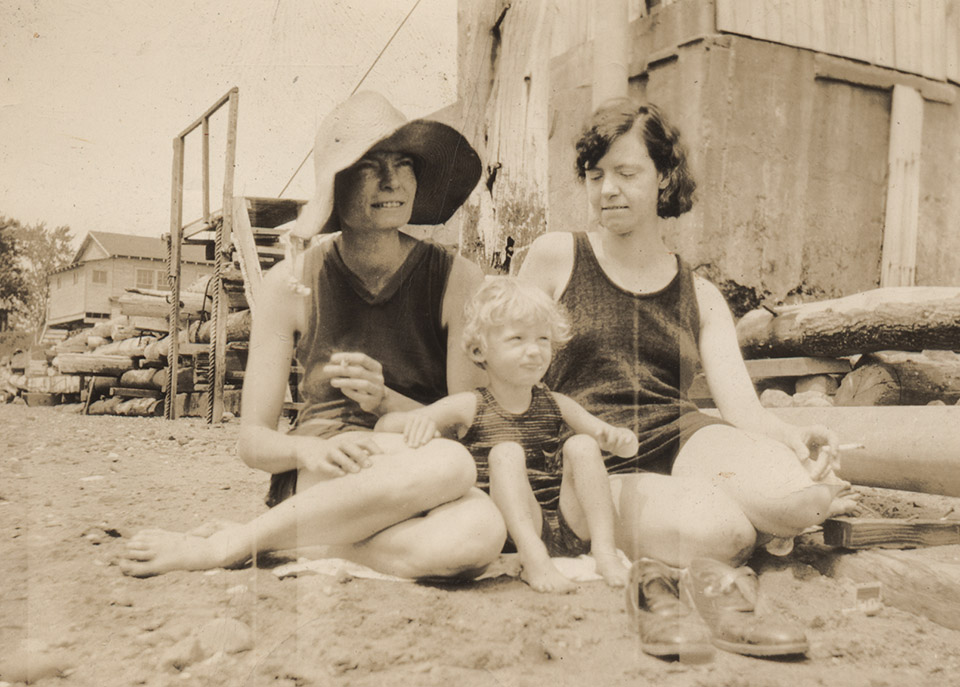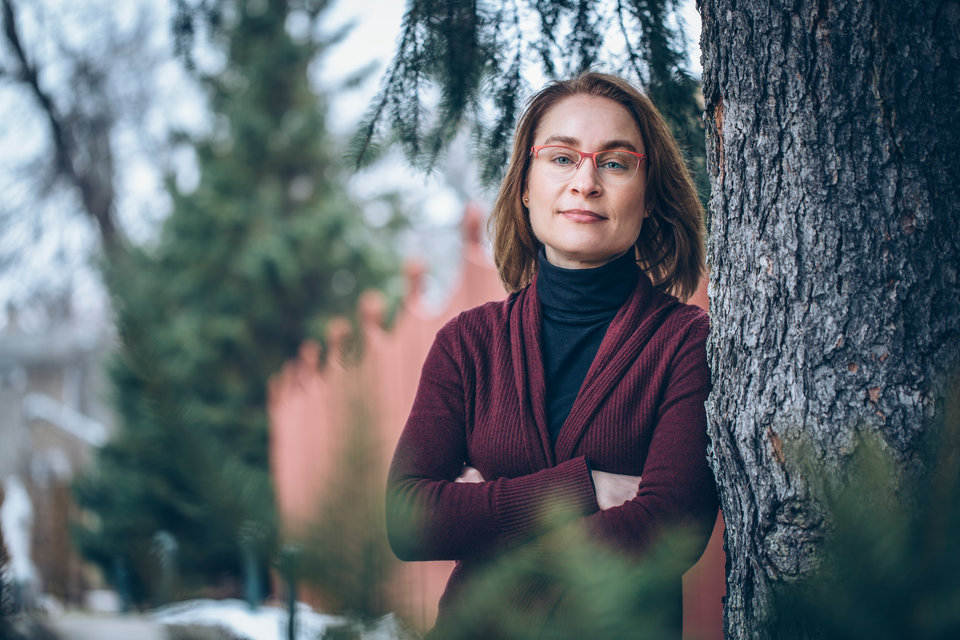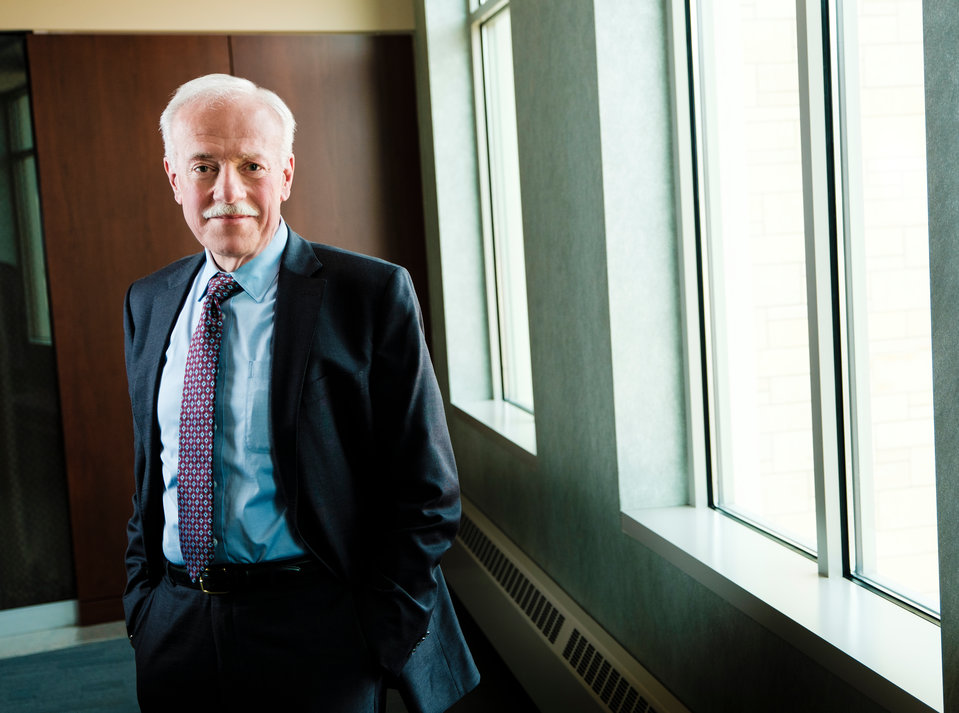“You never know where your research might lead,” professor of history Anne Klejment said, laughing, as she recalled her experiences during her 2013-2014 sabbatical. “History is endlessly filled with real life surprises. Never boring.”
She had planned to work on three related projects, each of them related to the life and work of Dorothy Day (1897-1980), co-founder of the Catholic Worker movement and candidate for eventual canonization, who Pope Francis named as one of four great Americans. Online and microfilm sources allowed a portion of the research to be completed on campus. Historians, however, regularly make pilgrimages to libraries and archives that collect unique materials that do not circulate. Klejment planned a two-stage research trip to New York City and Swarthmore, Pennsylvania. At first, the New York phase appeared to be of limited value. “Despite careful planning,” Klejment noted, “the collections I accessed added little valuable evidence. Research always involves serendipity – and risk.”
What to do? She needed to remain in New York for a few more days since she was committed to a speaking engagement. Earlier that year at a conference at St. Thomas University in Miami Gardens, Florida, Klejment presented her findings on Day’s spirituality. At the session, Martha Hennessy, a member of Catholic Worker and one of Day’s granddaughters, was scribbling notes as Klejment spoke. Fascinated by new research on Day’s reception of the teachings of Vatican II, Hennessy invited Klejment to present her findings at one of the New York City Catholic Worker’s Friday meetings.
Fortunately, there was Plan B. Phil Runkel, Catholic Worker archivist at Marquette University, and Klejment had discussed a reference to a garden column in the Advance, a Staten Island daily newspaper for which Day had written shortly after her conversion. “With Phil’s suggestion that it was probably published in 1931, I would try to locate it. Maybe it would supply insight into the influence of nature on Day’s spirituality,” she thought.
Klejment hopped a bus to Battery Park and took the Staten Island Ferry to the one library in the world that owned microfilmed back issues of the Advance. Figuring that a garden column might have appeared as early as March, she headed to the cabinets filled with microfilm reels. “I couldn’t believe it!” she said. “Before locating the garden columns, I found a previously unknown column by Day titled ‘True Story Fictionalized.’ After a few days wrestling with an ornery microfilm reader, I possessed a folder of blurred copies in addition to a painful neck and shoulders.”
The “True Story” column, which ran for over a month, was a significant discovery. Klejment is using the fictionalized stories to explore Day’s life and spirituality during a poorly documented period in her life. Her letters from this era mostly were sent to her beloved domestic partner, begging him to marry her so that she could be a good Catholic and spend her life with him. Day’s existing diaries began in 1934, shortly after the founding of the Catholic Worker movement.
“To date,” Klejment explained, “these newspaper articles are the only publications intended for a wide readership in which Day discussed highly personal issues, including her faith. She invented the family she had hoped for. Perhaps it was a creative attempt to convince the father of her daughter to marry, despite his rejection of religious authority."
In addition to portraying family life in the column, she shared cost-cutting tips, suggested how readily available seafood, herbs and plants could provide meals, and supported the ideal of simple living during the Great Depression. She created in her column an ethnically and religiously diverse community and presented a Catholic family as kind and tolerant neighbors at a time when the Ku Klux Klan promoted prejudice against Catholics, immigrants and others. These positive images of Catholics demonstrate that Day was already engaged in the kind of work that later would become known throughout the world – after she had launched the Catholic Worker movement with Peter Maurin.
In 2013 Klejment’s research and writing on Dorothy Day resulted in her appointment to the board of the Dorothy Day Canonization Support Network, an organization that helps to promote knowledge of Day and assist the Dorothy Day Guild with the canonization effort. She arranged the visit of another of Day’s granddaughters, Kate Hennessy, to St. Thomas in February. Hennessy, author of a highly acclaimed biography of her grandmother, Dorothy Day: The World Will Be Saved by Beauty, read from and discussed her book on campus on Feb. 27 and 28.
Thanks to Klejment’s sabbatical and sabbatical assistance grant, and the assistance of archivists, librarians and colleagues at St. Thomas and in the American Catholic Historical Association, this spring or summer will see the publication of two of her sabbatical projects as well as the reprint of an earlier journal article. Klejment contributed the chapter “From Union Square to Heaven” on the Christian anarchism of Dorothy Day and the Catholic Worker to Radical Gotham, a history of the varieties of anarchism and anarchist spaces in New York City from the German anarchists of the late 19th century to the Occupy Wall Street Movement. US Catholic Historian will publish her article “Dorothy Day’s Fictionalized Family.” “Dorothy Day and Cesar Chavez: American Catholic Lives in Nonviolence,” which originally was published in US Catholic Historian, will be a chapter in Remapping the History of Catholicism in the United States.
“Yes,” Klejment said with a smile, “never would I have guessed that my research might help with the canonization of a modern American saint. I love teaching and researching history, but it’s not a solitary endeavor – it takes a village to write history.”
Read more from CAS Spotlight.





